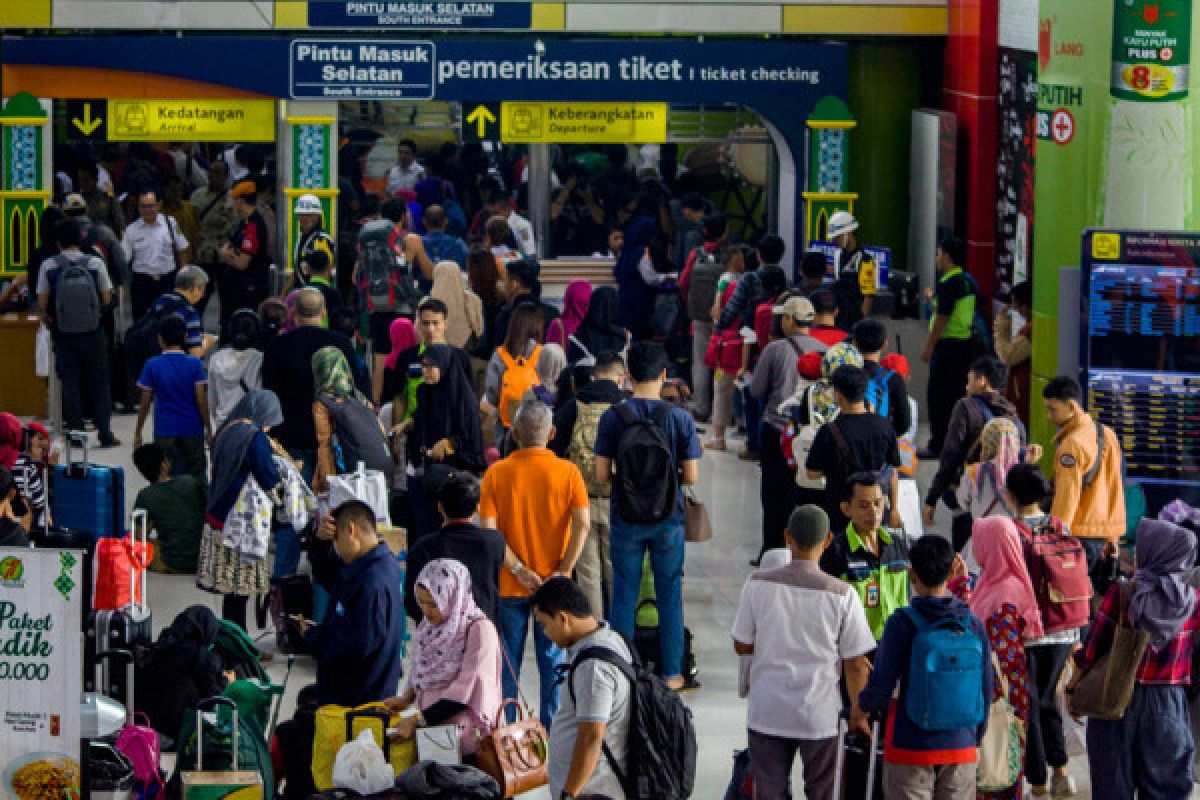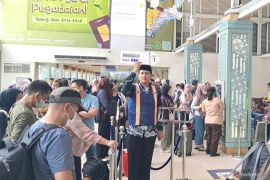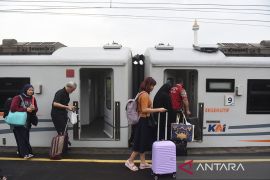"Up till now, according to my estimation, two-thirds of some 19 million travelers have left for their hometowns," Sumadi said, while monitoring the exodus at Harjamukti bus terminal, here, on Tuesday.
He was accompanied by Land Transportation Director General Budi Setiyadi and President Director of PT Jasa Raharja insurance company Budi Rahardjo.
The exodus was smooth thanks to a good synergy among the transportation offices, local governments, the Indonesian Defense Forces (TNI), and the National Police (Polri) in every region, according to the minister.
Many travelers have managed to cut their journey duration, and the number of traffic accidents has dropped drastically compared to that of the previous year.
New toll roads and smooth roads have helped shorten the traveling time, the minister remarked.
The number of private vehicles used during the exodus has decreased thanks to free rides by trains, boats, and buses provided by the central and local governments, as well as state and private companies.
Besides, more people choose to use mass transportation means, he added.
The number of Eid Fitr travelers using planes has increased by 14 percent, a significant surge from the initial target at 4 percent, the minister remarked.
Karya monitored the traffic along the Jakarta-Cikampel toll road in a helicopter. He later used a car from Cikopo to Cirebon.
Nationally, this year, it is estimated that more than 19.5 million people will return home for reunion with family or friends and to celebrate the festivities after fasting for a month.
Of the 19.5 million Lebaran travelers, some 6.39 million are estimated to use two-wheeled motor vehicles, according to the Indonesian Transportation Society.
Reporter: Ahmad Wijaya
Editor: Andi Abdussalam
Copyright © ANTARA 2018












